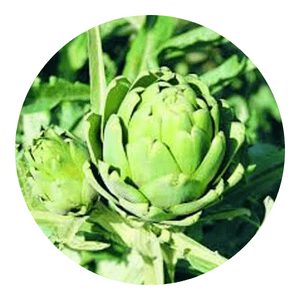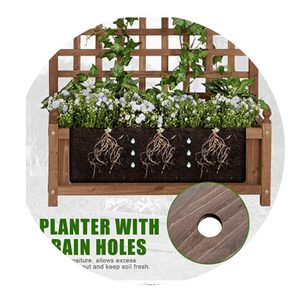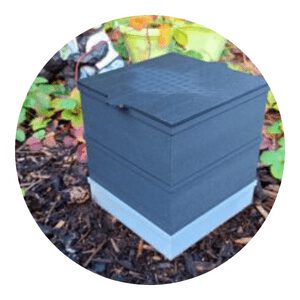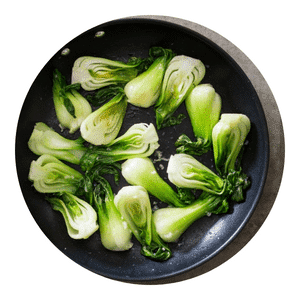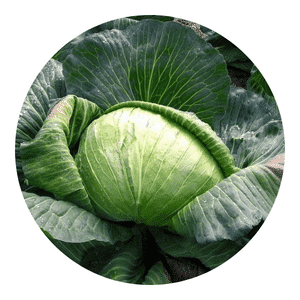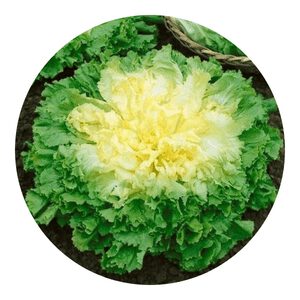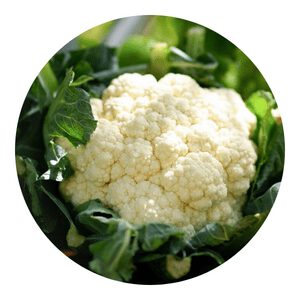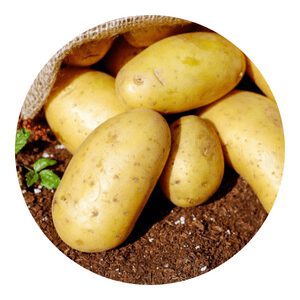How to grow organic artichoke
Organic artichokes can be grown in any home garden with little effort.
They are a low-maintenance crop that is pest and disease resistant.
Artichokes require full sun and well-drained soil. They can be started from seed or transplanted from starts.
With proper care, organic artichokes will yield a bountiful crop.
Table of Contents
why artichoke?
For many people, the artichoke is an unusual and intimidating vegetable.
It’s actually a member of the thistle family, and if you’ve ever seen one growing in the wild, you know that they’re huge!
But don’t let that deter you from growing your own organic artichokes.
They’re relatively easy to care for and extremely rewarding to harvest. Here are a few tips on how to get started.
The first thing you need to do is choose the right variety of artichoke for your climate.
If you live in a warm climate, opt for the Green Globe variety.
If you live in a cooler climate, try the Imperial Star variety.
Once you’ve selected your plants, it’s time to prepare the soil. Artichokes prefer well-drained soil that’s rich in organic matter.
Soil
Deep, well-drained
Organic artichoke cultivation requires rich, deep, well-drained soil with a pH of 6.5 to 7.5.
Amend the soil with compost or other organic matter prior to planting.
Artichokes prefer full sun but will tolerate some light shade.
Space plants 3 to 4 feet apart in rows 5 to 6 feet apart.
Planting
Start indoors
Start your artichokes from seed indoors in late winter for a head start on the growing season.
Sow artichoke seeds in pots filled with moistened, sterile potting mix.
Place the pots in a warm location and keep the soil moist until germination occurs.
Once the seedlings emerge, thin them to one plant per pot and transplant them into the garden after all danger of frost has passed.
Watering
Keep soil moist
Watering is one of the most important aspects of growing organic artichokes.
Without proper watering, the plants will not be able to thrive.
Keep soil moist at all times, especially during the hot summer months. Water early in the morning or evening so that the water can penetrate the soil and reach the roots of the plant.
This is the start of a new day The sun shines bright and the sky is blue I am feeling so good, I think I'll try To grow an organic artichoke I get some seeds from the store And plant them in my garden plot With lots of love and care My artichokes will surely grow I can't wait to see the results And taste my homegrown artichokes They'll be so fresh and delicious I'm so excited to Start Grow Organic Artichokes!
Chappy The Gardener
Pests and diseases
watch for aphids
Aphids are small, pear-shaped insects that can be a serious problem in the garden. They attack a wide variety of plants, including artichokes.
Aphids suck the sap from plants, which can weaken and even kill them. They also spread diseases from plant to plant.
To control aphids, start by planting resistant varieties of artichokes. If aphids are already present, try hosing them off with water or spraying them with an insecticidal soap.
You can also attract natural predators such as ladybugs into your garden.
Harvesting
Wait until artichokes are 6-8 inches
Harvesting artichokes is a simple process that can be done by anyone. You will need to wait until the artichokes are 6-8 inches in order to get the best results.
Here are a few tips on how to harvest your artichokes:
1. Cut the stem of the artichoke plant about an inch below the flower head.
2. Use a sharp knife to cut off the top 2-3 inches of the artichoke head.
3. Remove any small, tough leaves from the outside of the artichoke head.
4. Trim off any sharp points from the leaves with a knife.
5. Rinse the artichoke heads under cold water to remove any dirt or debris.
6. Cut the artichokes into even pieces, if desired, and serve immediately.
The best organic fertilizer for artichoke
Here are a few things to look for when choosing an organic fertilizer for your artichokes:
1. Nutrient Content – Look for an organic fertilizer that is high in nitrogen, phosphorus, and potassium. These nutrients are essential for healthy plant growth.
2. Soil Type – Different soils have different nutrient needs.
Be sure to choose an organic fertilizer that is specifically formulated for the type of soil you have.
3. Application Rate – Follow the manufacturer’s recommendations for how much fertilizer to apply per plant. Applying too much or too little can both adversely affect plant growth.
Compost
Organic artichoke growing is simple and doesn’t require any special equipment. You can use compost as organic fertilizer for artichokes.
Compost will add important nutrients to the soil and help the plants grow healthy and strong.
To make your own compost, you’ll need a bin or container, some organic matter like leaves or grass clippings, and water.
Mix the ingredients together and wait a few weeks for the compost to break down.
Then you can apply it to your artichoke plants.
Composting is a great way to reduce waste and help the environment. It’s also an easy way to get free fertilizer for your garden.
So why not give it a try?
Your artichokes will thank you!
Manure
Organic artichokes are a delicious and nutritious addition to any meal.
They are a low-calorie, high-fiber food that is also a good source of vitamins C and K. But did you know that you can also use manure as an organic fertilizer for your artichoke plants?
Manure is an excellent source of nutrients for plants, and it can help to improve the yield and quality of your artichokes.
Manure also helps to improve the drainage and aeration of the soil, which can be beneficial for artichoke roots.
To use manure as an organic fertilizer for your artichokes, simply add it to the base of the plant when you first set it out to grow.
You can also add manure to the soil around your artichokes during the growing season.
Blood Meal
If you’re looking for an organic way to fertilize your artichokes, look no further than blood meal.
Blood meal is a natural source of nitrogen and other nutrients that will help your plants grow strong and healthy. Here’s how to use it:
1. To make a blood meal fertilizer, mix one part blood meal with four parts water.
2. Apply the mixture to the soil around your artichokes, being careful not to get any on the leaves.
3. Blood meal can also be used as a top dressing; just sprinkle it on the surface of the soil and water it in well.
4. For best results, apply blood meal every two weeks during the growing season.
Bone Meal
When it comes to growing organic artichoke, bone meal organic fertilizer is one of the best options out there.
Not only is it effective in terms of providing nutrients to the plant, but it’s also relatively easy to find and use.
Here’s a quick guide on how to use bone meal organic fertilizer for your artichoke plants.
When using bone meal organic fertilizer, it’s important to remember that a little goes a long way.
You don’t need to apply too much of it, as this can actually harm the plant. A general rule of thumb is to use about 1 cup per square foot of soil.
In terms of application, you can either mix the bone meal into the soil before planting, or you can top dress the soil around the plant once it’s already established.
How long does artichoke take to grow?
Organic artichoke takes about 80-100 days to grow.
The ideal temperature for germination is 70-85 degrees Fahrenheit.
You should start artichoke plants indoors in pots 8-10 weeks before the last frost date in your area.
What is the best way to grow artichokes?
Artichokes are a healthy and delicious vegetable that can be enjoyed fresh or cooked.
They are relatively easy to grow, but there are a few things to keep in mind to ensure a successful crop.
To start, artichokes need full sun and well-drained soil.
They should be planted in the spring after all danger of frost has passed.
Artichokes also need to be spaced about 2-3 feet apart to allow room for growth.
Once they are established, artichokes will need regular watering, especially during hot, dry periods.
They should also be fertilized every few weeks with an organic fertilizer.
Harvesting artichokes is usually done in the fall, but can vary depending on the climate.
The best way to tell if they are ready is to cut one open and check the color of the flesh.
How many artichokes do you get from each plant?
If you’re looking to add some artichokes to your garden, you may be wondering how many artichokes you can expect from each plant.
The answer may surprise you – with proper care, each artichoke plant can yield 10 or more artichokes in a single season.
That’s a lot of artichokes, especially considering that just one or two plants is usually all you need to supply an entire family with fresh artichokes throughout the spring and summer months.
So if you’re thinking about adding these tasty veggies to your garden, rest assured that you’ll have plenty to enjoy.
Do artichoke plants need sun or shade?
Organic artichokes are a healthy and delicious addition to any meal.
But before you can enjoy them, you need to know how to grow them.
Artichoke plants need full sun to partial shade.
They prefer well-drained, moist soil but can tolerate some drought.
Plant artichokes in the spring, after all danger of frost has passed.
Space plants 3 to 5 feet apart, with rows 4 to 5 feet apart.
Artichokes will spread over time, so give them plenty of room to grow.
Mulch around plants to help retain moisture and keep weeds at bay.
What month do you plant artichokes?
March is the best month to plant artichokes in most climate zones.
In areas with very mild winters, you can plant as early as February.
Artichokes need well-drained, sandy soil and full sun to thrive.
Do artichokes come back every year?
If you love artichokes, you’re in luck.
These tasty vegetables are actually quite easy to grow, and they will come back every year.
How to grow artichoke hydroponically?
If you’re interested in growing your own artichokes, but don’t have a lot of space, consider growing them hydroponically.
Hydroponic artichokes can be grown in a small space and don’t require soil.
Here’s how to grow artichokes hydroponically:
To get started, you’ll need to purchase an artichoke plant or two. These can be found at most garden centers or online.
Once you have your plants, you’ll need to set up a hydroponic system.
There are many different ways to do this, but one simple way is to use a plastic container with holes drilled in the bottom for drainage.
Fill the container with a nutrient-rich solution and place the plants inside.
Make sure the roots are submerged in the solution and that the leaves are above the surface.
It’s important that the leaves have access to air, so don’t cover the top of the container.
Now you can sit back and wait for your artichoke plants to grow.
How to grow artichoke aquaponics
Aquaponics is a method of agriculture that combines raising fish with growing plants in water.
It is a sustainable way to produce food as it recycles water and nutrients, and requires less land and water than traditional farming.
Growing artichokes in aquaponics is relatively easy, and they are a versatile vegetable that can be used in many dishes.
Here are some tips on how to grow artichoke aquaponics:
To start, you will need a fish tank, grow bed, and pump.
The fish tank should be at least 50 gallons, and the grow bed should be able to hold about 20-30 plants.
Fill the tank with clean water and add your chosen fish.
Commonly used fish in aquaponics include tilapia, catfish, and trout.
How to grow artichoke in a pot
If you’re interested in growing your own artichokes, but don’t have the space for a full garden, don’t worry!
Artichokes can easily be grown in a pot.
Here’s what you need to know:
Choose a large pot that is at least 18 inches wide and deep.
Fill the pot with rich, organic soil and mix in some compost.
Artichokes need full sun, so choose a spot in your yard or on your patio that gets at least six hours of sunlight each day. Water the soil thoroughly before planting.
To plant, dig a hole that is twice as wide as the root ball of your artichoke plant. Gently loosen the roots and place the plant in the hole. Backfill with soil and water again.
How to grow artichoke in a greenhouse
Greenhouses provide the perfect environment for growing artichokes.
By controlling the temperature and humidity, you can ensure that your plants have the optimal conditions for growth.
Here are some tips for growing artichokes in a greenhouse:
1. Start with healthy plants. Artichokes are susceptible to disease, so it’s important to start with plants that are free from pests and diseases.
2. Provide adequate ventilation. Greenhouses can get very hot, so make sure to provide good ventilation to keep the air circulating.
3. Keep the soil moist. Artichokes need consistent moisture, so be sure to water regularly and check the soil moisture level frequently.
4. Fertilize regularly. Artichokes are heavy feeders, so they will need regular fertilization to stay healthy and produce well.
The health benefits of artichoke
If you’re looking for a nutrient-rich vegetable to add to your diet, consider the artichoke.
This spiky flower bud is not only delicious, but it also offers a host of health benefits.
Artichokes are a good source of fiber, vitamins C and K, and minerals like magnesium, potassium, and manganese. They also contain antioxidants that can help protect your cells from damage.
Studies have shown that artichokes may help improve digestion, lower cholesterol levels, and protect against heart disease and cancer.
So next time you’re at the grocery store, pick up a few artichokes and enjoy their many benefits!
Contains lots of antioxidants
Studies have shown that artichokes are one of the most antioxidant-rich vegetables.
So if you adhere to a proper diet, artichokes should definitely be a part of your menu.
Antioxidants protect the body’s cells from accelerated aging and from free radical damage.
In addition, if you exercise – the antioxidants in artichokes can help you recover better after a workout.
High nutritional value
Artichoke contains lots of vitamins and minerals, including vitamin C, vitamin K, folic acid (vitamin B9), magnesium, iron and phosphorus.
It is also low in fat, rich in dietary fiber and also contains quite a few antioxidants, to which we will return later.
Can contribute to the regulation of blood pressure
A study published this year in the medical journal Complementary Therapies in Medicine showed that among people with high blood pressure, consuming artichokes for 12 weeks can significantly reduce blood pressure.
People with high blood pressure are at higher risk for heart attack and stroke, among the most common causes of death in the Western world.
Raises good cholesterol and lowers bad cholesterol
Although these are studies that have used artichoke leaf extract – so it is difficult to know if the same effect can also be from eating the vegetable, but there is no doubt that there is potential here.
Studies have shown that people who consumed artichoke leaf extract enjoyed lower levels of “bad” cholesterol (LDL) and higher levels of “good” cholesterol (HDL).
High levels of LDL cholesterol can lead to cardiovascular disease, including atherosclerosis. Blockage of blood vessels due to high cholesterol levels can lead to life-threatening conditions such as stroke and heart attack.
The reason artichokes can reduce “bad” cholesterol is probably due to the anti-inflammatory antioxidant luteolin.
In addition, some speculate that artichoke leaf extract encourages more efficient processing of cholesterol in the body.
Contributes to liver health
Here, too, these are studies based on artichoke leaf extracts.
Non-alcoholic fatty liver is a common chronic disease. Maintaining a healthy lifestyle that includes a healthy diet, maintaining weight and exercise can help prevent the disease. But studies have shown that artichoke leaf extract can also help people with this disease.
In 2018, a small study was published that included 100 participants, the results of which showed that consumption of artichoke leaf extract among people suffering from non-alcoholic fatty liver disease, led to an improvement in their health condition, which included, among other things, a change in liver size.
In addition, blood tests showed signs that the liver condition had improved. The researchers also found that the extract reduced “bad” cholesterol and triglyceride (fat) levels in the blood.
Plant information:
Organic growing conditions for artichokes:
Lots of fertilizer, acidic soil, soil cover.
How to get artichoke for organic growing:
Root / seedling / seeds.
Disadvantages of growing artichokes:
Sensitive plant.
Irrigation conditions for growing artichokes:
Medium to multiple watering.
Light conditions in optimal condition for growing artichokes:
Almost full sun.
Recommended date for planting artichokes:
Can be planted all year round.
Pests of the artichoke plant:
In their youth snails attack and can kill the plant.
Artichoke Pruning Date:
After flowering.
Artichoke pruning:
Once the plant has finished flowering the plant should be lowered and let the new plants grow. If no new seedlings have developed, wait until new seedlings emerge.
Artichoke plant size:
1.5 m high, 1 m wide.
Artichoke growth rate:
1-3 years.
You can also grow artichokes in a pot:
Yes
Date of flowering for artichoke:
Spring-summer (May-August).
Artichoke pollination is carried out by:
Bees, beetles.
General information about the artichoke flower:
A large flower with petals with fleshy edges and a flower heart is fleshy.
Dilution of artichoke blooms:
If the plant is not strong enough, the flower should be lowered and replaced by new flowers.
Sowing artichokes:
It is not recommended to sow, tubers are better.
Preserving artichoke seeds until sowing:
A dry, dark place.
Artichoke sowing date:
Winter (February-March, with priority for March).
Sowing distance in artichoke:
1 m.
Depth of artichoke sowing:
1-2 cm.
Conditions for sowing artichokes:
Moist soil and half shade.
Watering artichoke seeds:
Medium watering +.
Artichoke germination time:
2-3 weeks.
Terms of Artichoke Germination?
Half shade, moisture.
Date of picking artichoke leaves:
All year round is recommended not when there are flowers
Proper pruning of leaves in artichoke:
Pruning at the base of the plant, eat only the fleshy part
Information about artichoke leaves:
Succulent leaves serrated at edges
Use of artichoke owners:
Cooked
How to perform vegetative reproduction in artichokes:
Splitting root tubers.
Date of vegetative reproduction for growing artichokes:
End of winter-spring.
Duration of root growth in vegetative reproduction in artichokes:
3-7 weeks.
Through the treatment of vegetative reproduction in artichokes:
Irregular watering, drained soil.
If you like artichokes it is recommended to grow:
Cucumber, Zucchini, Strawberry, Pumpkin, Squash, Sweet Potato
In conclusion,organic artichoke is a great way to start and grow your own food. It is easy to do, and you can get started with just a few plants.
You will need to water them regularly, and they will need some sunlight.
But other than that, they are low maintenance and can provide you with fresh vegetables all season long.
So why not give it a try? You may be surprised at how much you enjoy it.
Click To Grow
Helps Us Grow – Share If You Like





